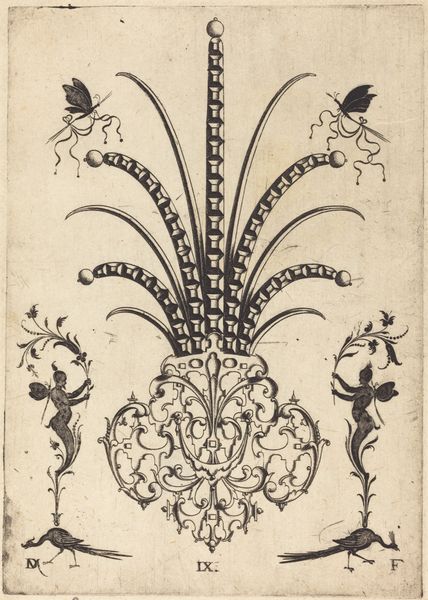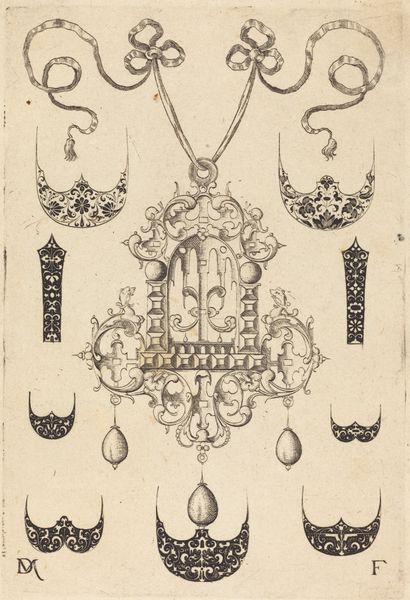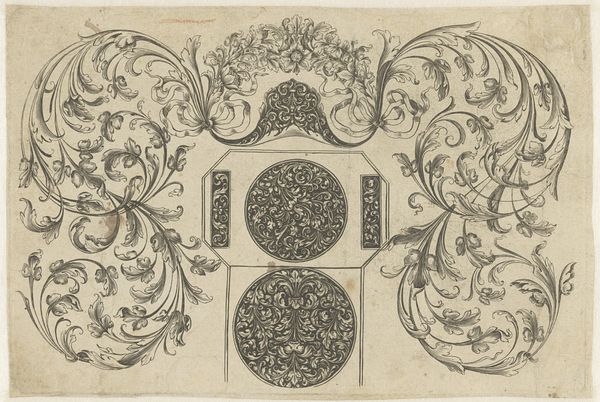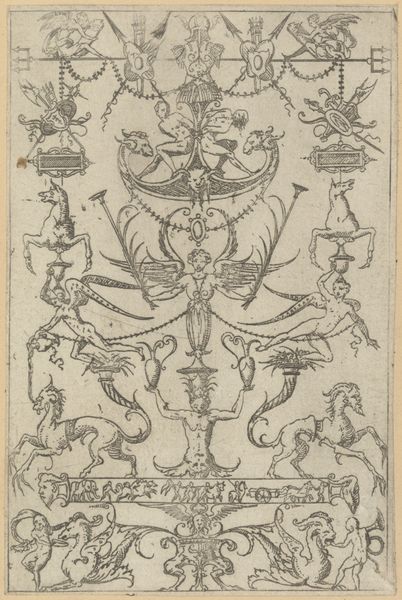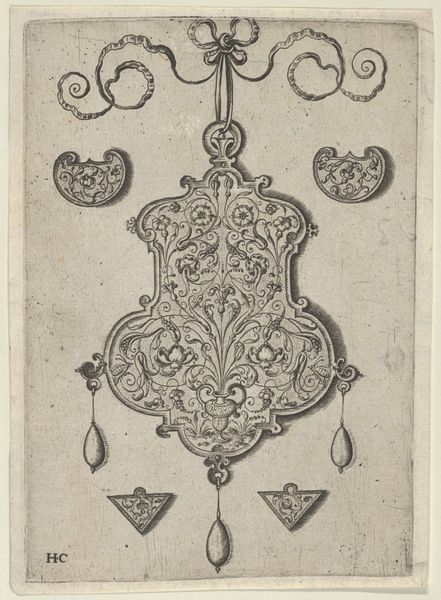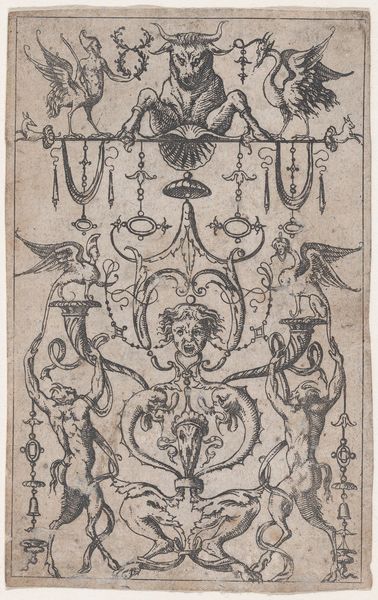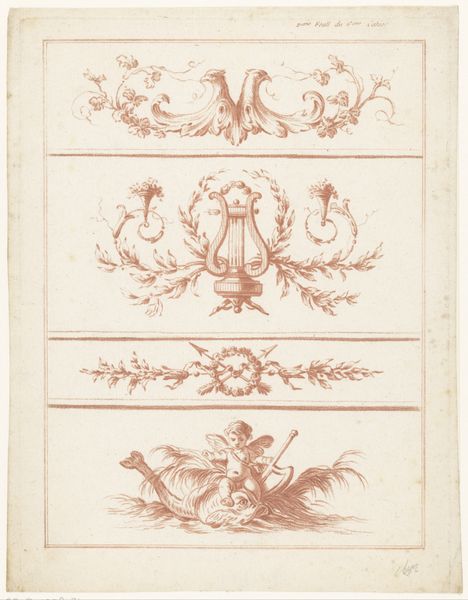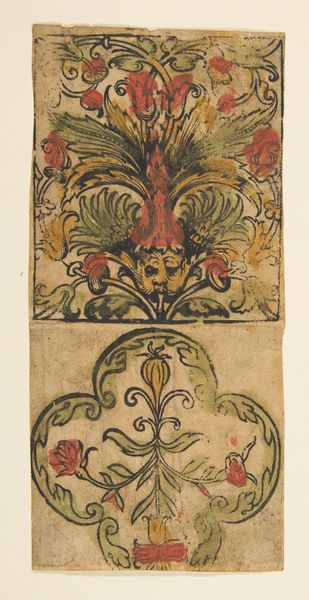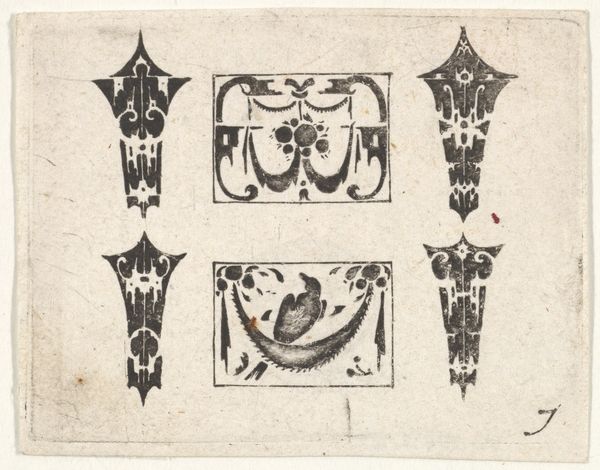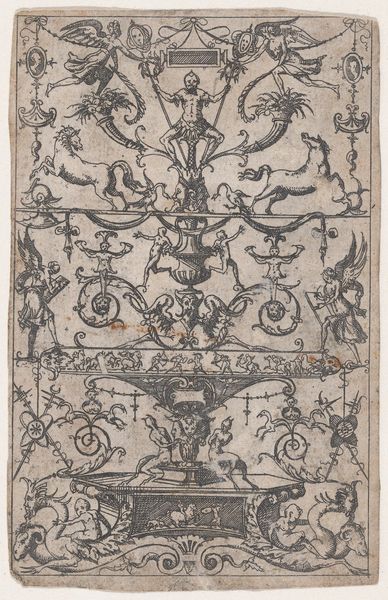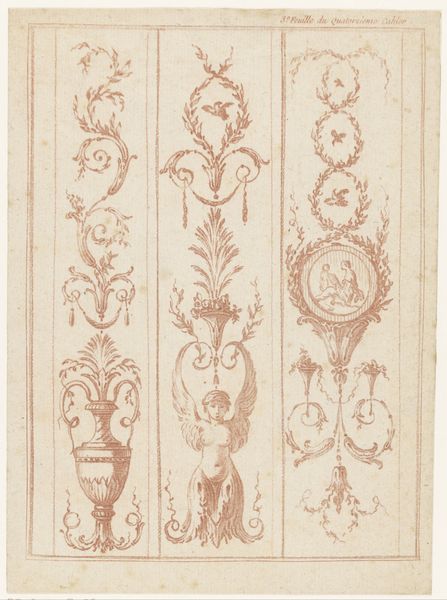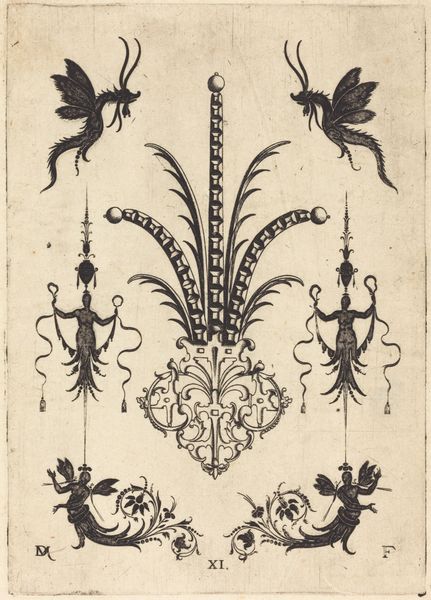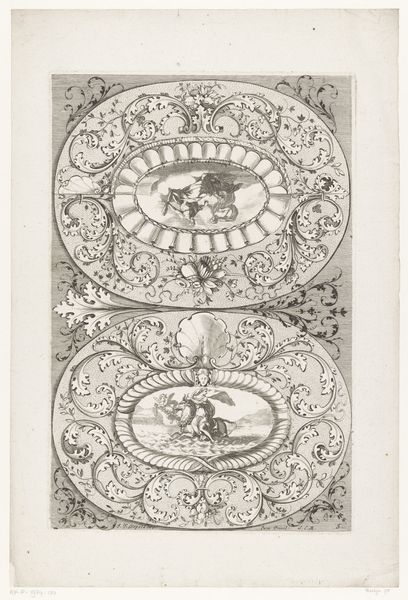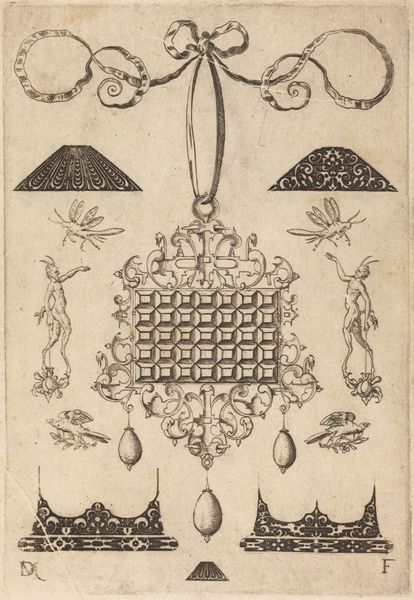
tempera, print, etching, intaglio
#
tempera
# print
#
etching
#
intaglio
#
linocut print
#
geometric
#
line
Dimensions: 4 7/16 x 2 7/16 in. (11.27 x 6.19 cm) (image, sheet)4 5/8 x 2 1/2 in. (11.75 x 6.35 cm) (sheet, each)
Copyright: Public Domain
Curator: Right, let's delve into this fascinating intaglio print. It's "Eight of Cups" by Claude Burdel, dating back to 1751. Editor: First impression? It’s like a heraldic crest gone delightfully mad—or maybe a dessert menu designed by someone with a serious geometric obsession! Curator: Quite. Focusing on form, note the symmetry: eight stylized cups arranged in two rows of four, connected by curvilinear lines suggesting vines or perhaps stylized feathers. Editor: I love how the color palette—red, gold, blue—it's oddly satisfying against the off-white ground. Makes me think of alchemic color symbolism, or some forgotten symbolic system. It does seem like something out of a fairytale. What exactly is “tempera," the print medium cited by Mia? Curator: The use of tempera for these works creates a soft matte texture which emphasizes the linearity of the print work; intaglio denotes it as an engraved printing process. One finds that the etching lines allow for great detail with regards to depth and color variations across such cards, each acting more so as tiny individual art object, even if reproduced. Editor: Individual art objects designed for a larger system... there is something rather mystical in the patterns: perhaps related to the divination rituals popular in Europe at this time, with its strange intersection between chaos and meticulous planning! Curator: Agreed. What one senses as an individual now has a formal grounding as a standardized mode in these artistic endeavors of the 18th Century; what do we really possess when our artistic selves are determined via outside methods such as structural hierarchy? Editor: Perhaps meaning finds you rather than the other way around in many creative fields, wouldn’t you say? It’s the happy accidents that build character in all art. Curator: An astute perspective, though the inherent danger exists that too much improvisation can descend into randomness. Editor: Well, lucky we aren't talking about randomness today, but instead, neat, ordered cups! It is funny how such simple forms evoke complex feelings when put together. Curator: Indeed, and after all, a structure—a starting point— is precisely what an artist needs for an insightful journey to begin.
Comments
No comments
Be the first to comment and join the conversation on the ultimate creative platform.
